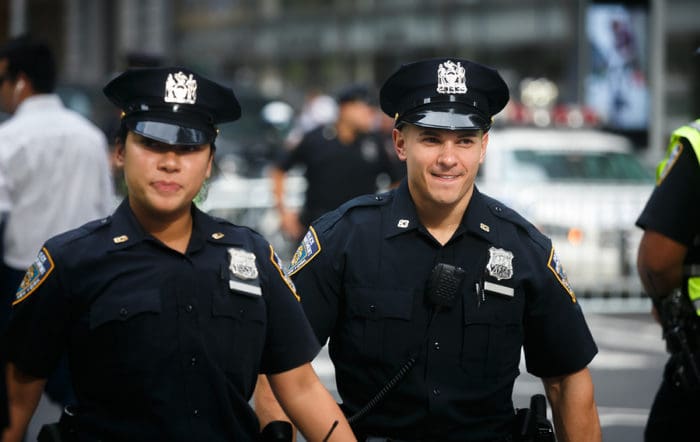By NRA-ILA
Readers may have noticed that we review “gun policy” studies regularly. Those clamoring for federal funding for gun policy research should set themselves up a Google Scholar alert, but not everything we want to highlight is directly related to gun policy. Crime is a complex issue and criminals are – shockingly – at the root of “gun crime”.
Studies and position papers published by doctors or medical professionals call for a public health approach to reducing “gun violence” but their policy suggestions are always focused on law-abiding gun owners – and their recommendations omit any sort of law enforcement component when they write about having a conversation to determine the path forward.
“More COPS, less crime” is a new study published in The Journal of Public Economics that looks explicitly at the effect of law enforcement on crime. Steven Mello, a PhD candidate in Economics at Princeton University, used the resurgence in funding for the Community Oriented Policing Service (COPS) hiring program under the American Recovery and Reinvestment Act as a natural experiment to estimate the causal effect of police on crime.
He found that each additional police officer hired prevented four violent crimes and 15 property crimes. Mello attributes the decrease in crime to a deterrence effect additional law enforcement officers have rather than an increase in arrest rate.
What makes Mello’s paper so interesting is the built-in experiment. Less than $20 million was appropriated for the COPS program each year between 2005-2008. As the recession set in, the program was revitalized with a billion-dollar earmark to prevent an increase in crime as economic conditions worsened (and to preserve law enforcement jobs). Grants were awarded based on fiscal need and crime scores determined by the COPS office with requirements to ensure every state received funding and to prioritize large jurisdictions.
As Mello notes, “Unsurprisingly, higher-scoring cities are larger, poorer, and have significantly higher crime rates.” The grants covered 100% of entry-level salary and benefits for new or rehired officers for three years.
The key finding is that “Among violent crimes, the results are negative and statistically significant for murder, rape, and robbery, while the estimate is not significant for assault.” Mello’s findings for murder are limited by the variability in the murder rate, his findings imply that “one life can be saved by hiring about 9.5 new police officers.”
Mello goes on to discuss his findings in terms of cost-benefit, finding that each officer contributes $352,000 in social benefit (based on crime reduction) – well above the point at which the additional officer would be considered cost-effective.
Mello’s findings offer a quantitative contribution to the common-sense conviction that police officers reduce crime – and not just by locking everyone up. Mello may follow in the footsteps of John Donohue and other anti-gun researchers, but we have no qualms with his findings here.
Police fight crime, criminals break the law. Add more police and crime falls. It makes sense. Just as it makes sense to focus “gun violence” solutions on criminals instead of law-abiding gun owners.
This article originally appeared at nraila.org and is reprinted here with permission.
